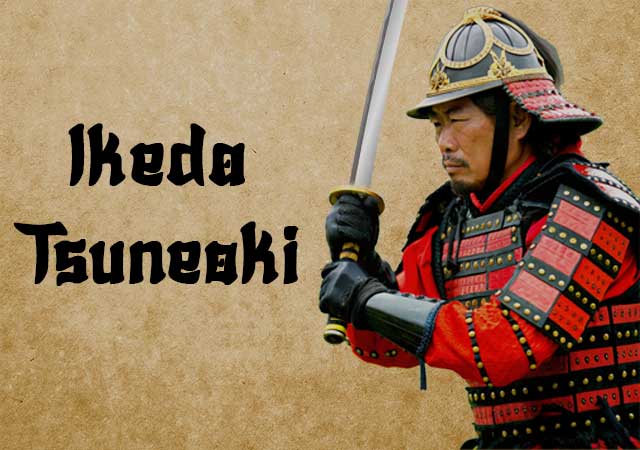
Ikeda Tsuneoki (1536 – May 18, 1584), also known as Ikeda Nobuteru, was a prominent daimyo of the Ikeda clan and a distinguished military commander during Japan's Sengoku and Azuchi-Momoyama periods. He served under the influential warlords Oda Nobunaga and Toyotomi Hideyoshi. Tsuneoki’s connection to Nobunaga began early, as his mother, Yotokuin, was Nobunaga’s wet nurse and later became a concubine to Oda Nobuhide, Nobunaga's father.
Early Life and Background
Tsuneoki’s childhood name is unknown, but he was commonly called Katsuzaburo. His father, Ikeda Tsunetoshi, served Oda Nobuhide. Born in one of several debated provinces (Owari, Mino, Settsu, or Omi), Tsuneoki rose to prominence as one of the four karo (senior retainers) at Kiyosu Castle. He held the title of Kii-no-kami ("Governor of Kii Province") and adopted the courtesy name Shozaburo. Later in life, after becoming a priest, he referred to himself as Shonyū.
Military Achievements
1556–1570: Early Campaigns
- In 1556, Tsuneoki played a key role in suppressing the treasonous Oda Nobuyuki, Nobunaga’s younger brother.
- In 1560, he led forces in the historic Battle of Okehazama against Imagawa Yoshimoto.
- By 1570, he commanded troops at the Battle of Anegawa, contributing to Nobunaga’s victory over the Azai-Asakura alliance.
1571–1577: Consolidation of Power
- Tsuneoki participated in the Siege of Mount Hiei, a campaign to neutralize the militant Buddhist monks of Ishiyama Honganji, and the attacks on Nagashima Ikko-ikki.
- He fought at the Siege of Makishima Castle in 1573, securing the surrender of Ashikaga Yoshiaki, the last Ashikaga shogun.
- Tsuneoki’s victories continued at the Battles of Nagashino (1575) and Tedorigawa (1577), where he fought the Takeda and Uesugi clans, respectively.
1580–1582: Rising Influence
- In 1580, Tsuneoki captured Hanakuma Castle, defeating Araki Murashige, and was rewarded with domains in Settsu Province.
- Following the Incident at Honnō-ji in 1582, Tsuneoki led 4,000 troops under Hashiba Hideyoshi’s command at the Battle of Yamazaki, defeating Akechi Mitsuhide. He also participated in the Kiyosu Castle conference, which determined Nobunaga’s successor.
1583–1584: Final Campaigns
- In 1583, Tsuneoki supported Hideyoshi at the Battle of Shizugatake against Shibata Katsuie, earning 130,000 koku in Mino Province and becoming lord of Ogaki Castle.
- In 1584, during the Battle of Komaki and Nagakute, he captured Inuyama Castle but was ultimately defeated in a decisive engagement at Nagakute. Tsuneoki, along with his eldest son Ikeda Motosuke and son-in-law Mori Nagayoshi, was killed by Tokugawa Ieyasu’s forces.
Legacy
Despite his tragic death, Tsuneoki’s legacy endured through his children. His daughter Ikeda Sen survived the battle, and his second son, Ikeda Terumasa, succeeded him as head of the Ikeda clan. Terumasa later became a prominent daimyo under the Tokugawa shogunate. Tsuneoki is remembered as a loyal and skilled commander who played a crucial role in shaping the political and military landscape of his era.
See also
-
Hattori Hanzo
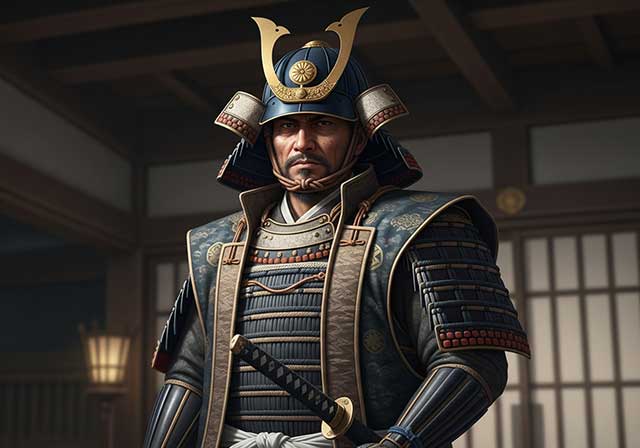
Hattori Hanzō, also known by the name Hattori Masanari, was the third son of Hattori Yasunaga, a samurai who served the Matsudaira clan. In his childhood he was called Tigachi Hanzō. His father held the highest rank in the shinobi hierarchy, that of jōnin, and Hanzō followed in his father’s footsteps, choosing the same path.
-
Hatano Hideharu
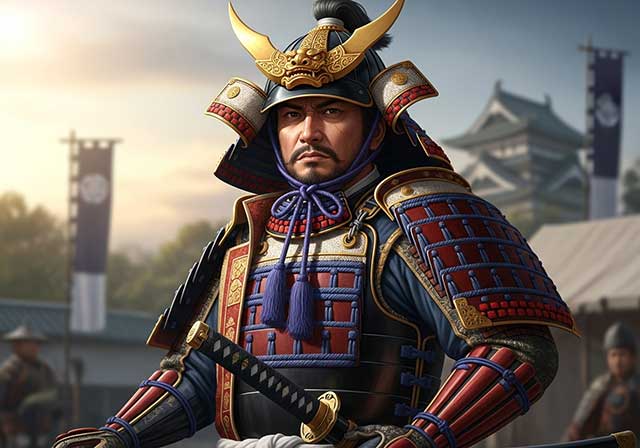
Hatano Hideharu was the eldest son of Hatano Harumichi, the head of the Hatano clan. However, in childhood he was adopted by his uncle, Hatano Motohide, and was therefore formally regarded as Motohide’s heir. From the time of Hideharu’s grandfather, Hatano Tanemichi, the Hatano clan had been a vassal of the powerful Miyoshi house, which exerted considerable influence over the Ashikaga shoguns and effectively shaped the political situation in the region. Early in his career, Hideharu served Miyoshi Nagayoshi and, judging by surviving records, held a fairly high position within his lord’s hierarchy, as he was among the select group invited to the enthronement ceremony of Emperor Ōgimachi in 1557.
-
Fukushima Masanori
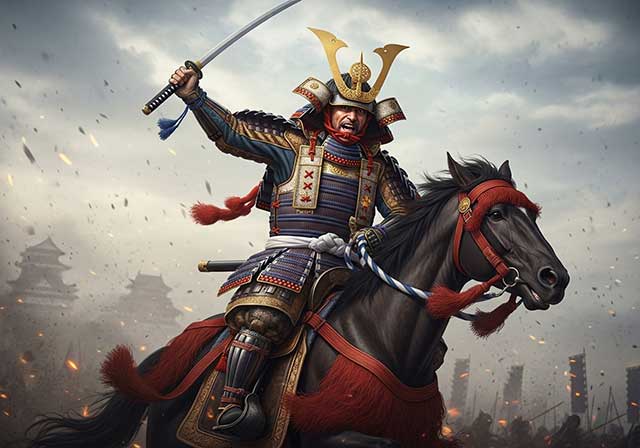
Fukushima Masanori, a samurai from Owari Province, served Toyotomi Hideyoshi and took part in the Battle of Shizugatake, where he distinguished himself so conspicuously that he was awarded the honorary title of one of the “Seven Spears of Shizugatake,” meaning the warriors who had shown the greatest valor in the battle. As a reward for his courage and martial prowess, he was granted land producing an income of 5,000 koku of rice.
-
Uemura Masakatsu
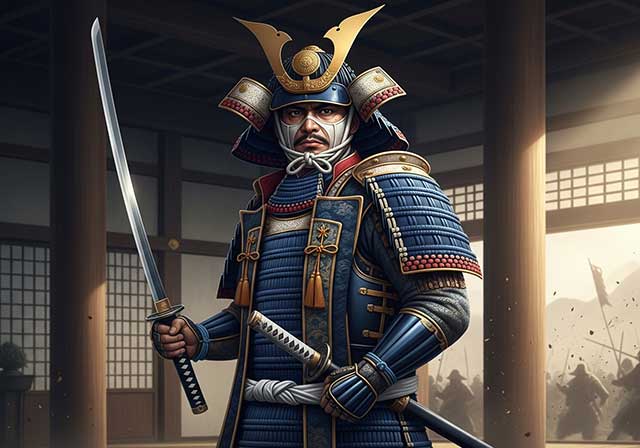
Masakatsu was a member of the Uemura clan and the son of Uemura Masatada; from an early age he served Tokugawa Ieyasu. During the Ikkō-ikki uprising in Mikawa Province in 1563, having converted from the Jōdo Shinshū Buddhist sect to the Jōdoshū sect, he took part in suppressing the rebels. After these events, Masakatsu was appointed a military governor and was granted land holdings. According to a number of sources, he was one of the so-called “Three Governors of Mikawa” (Mikawa sanbugyō), together with Amano Yasukage (1537–1613) and Koriki Kiyonaga (1530–1608).
-
Tomoe Gozen

Gozen is regarded as one of the few historically documented examples of true female warriors of feudal Japan, known as onna-musha or onna-bugeisha. Although Japanese history records countless women who at various times were forced to take up arms—for example, in defense of their castles—Tomoe Gozen was, without any doubt, a genuinely skilled and accomplished fighter. She was the wife of Kiso (Minamoto) Yoshinaka, although The Tale of the Heike describes her more as a female vassal. Yoshinaka rose in rebellion against the Taira clan and, in 1184, captured Kyoto after his victory at the Battle of Kurikawa. After the Taira were driven into the western provinces, Yoshinaka began insistently asserting that he alone was worthy of assuming leadership of the Minamoto clan and taking on the mantle of its head.
-
Tachibana Muneshige

Tachibana Muneshige was born the eldest son of Takahashi Shigetane, one of the principal retainers of the Ōtomo clan and commander of Iwaya Castle. In childhood, he bore the name Senkumamaru. His early years coincided with a period of intense military confrontation between the Ōtomo clan and other powerful warrior houses of Kyūshū—namely the Shimazu, Akizuki, and Ryūzōji clans.
-
Tachibana Dosetsu
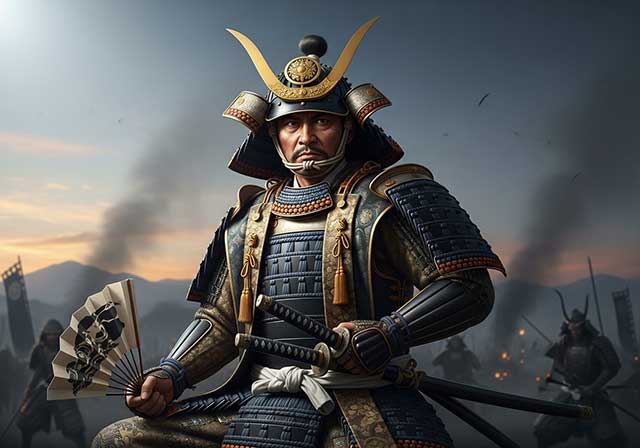
Tachibana Dōsetsu is the name by which Hetsugi Akitsura is more widely known; the name of this lineage is also found read as Hekki or Bekki. For a long period, Akitsura served the Ōtomo clan, the daimyō of Bungo Province, and took part in wars against the Ōuchi family, the principal enemies of the Ōtomo in northwestern Kyushu. In the 1560s, Akitsura seized the castle of the Tachibana clan, which had rebelled against the Ōtomo, and thereafter adopted the surname Tachibana. Around the same time, he took Buddhist vows and assumed the name Dōsetsu, which means “Snowy Road.”
-
Taira no Masakado
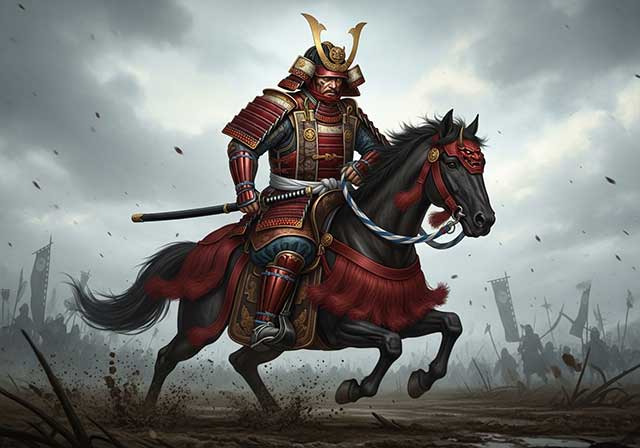
Taira no Masakado embodied the quintessential samurai of his era—self-assured, harsh, and unyielding. In his youth, he served in the palace guard and repeatedly proved his bravery while suppressing unrest. Thanks to these achievements, Masakado sought the post of chief of the capital’s military-police office (the kebiishi-chō), but he was rejected: by that time, nearly all court positions—now little more than privileged sinecures—were controlled by members of the powerful Fujiwara clan.

